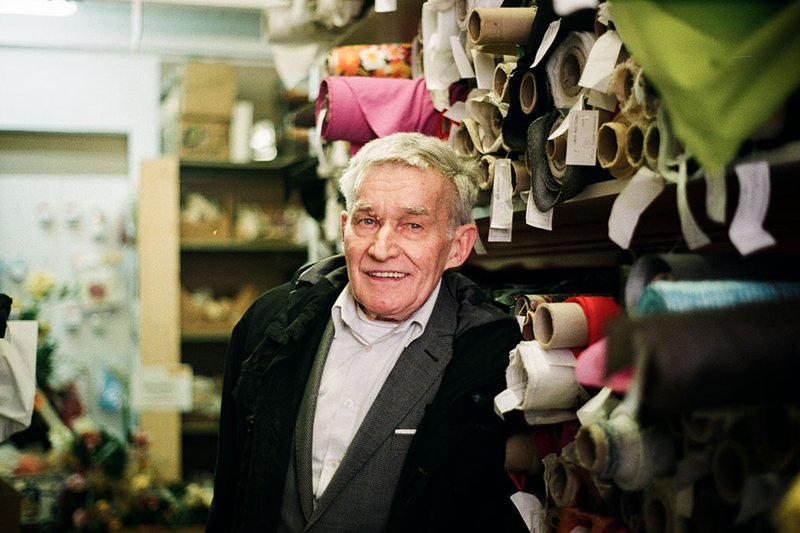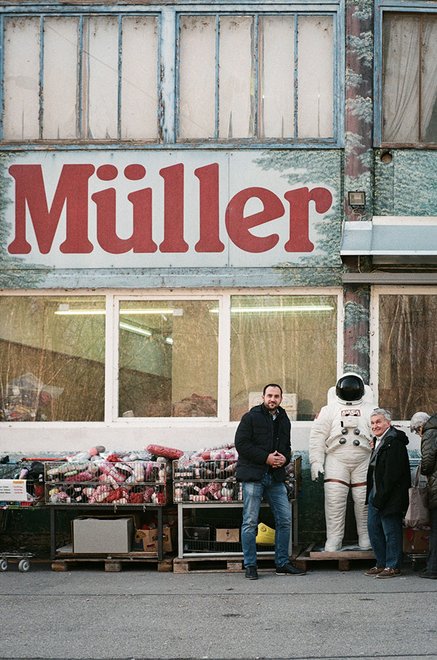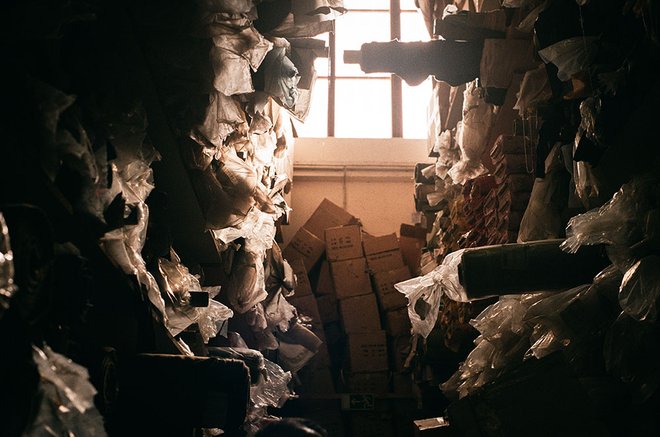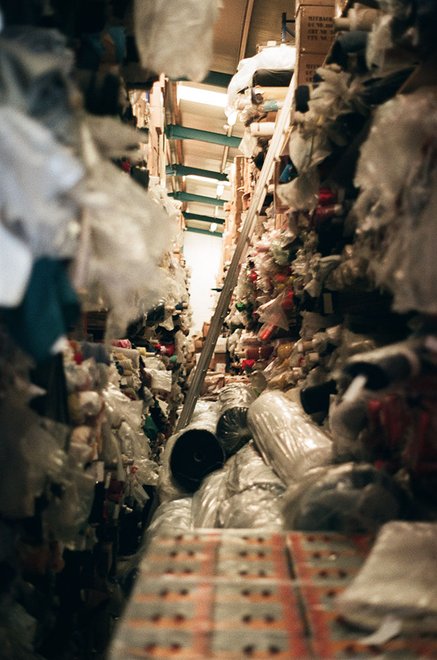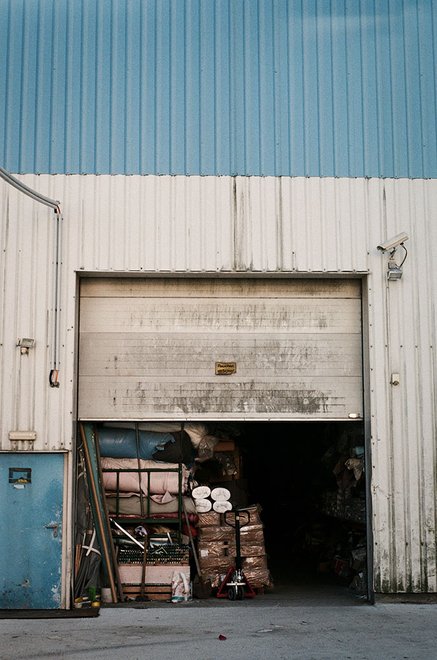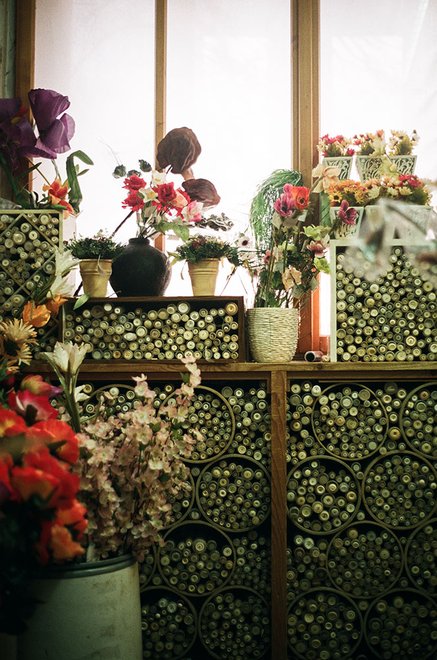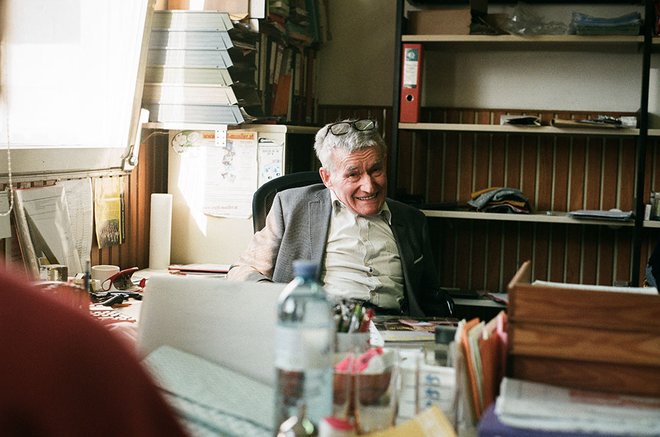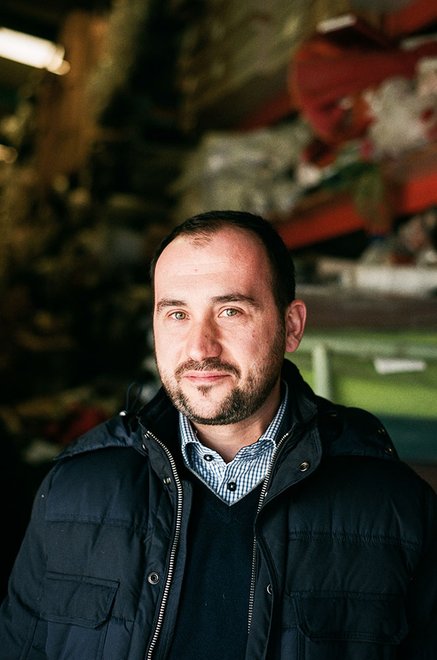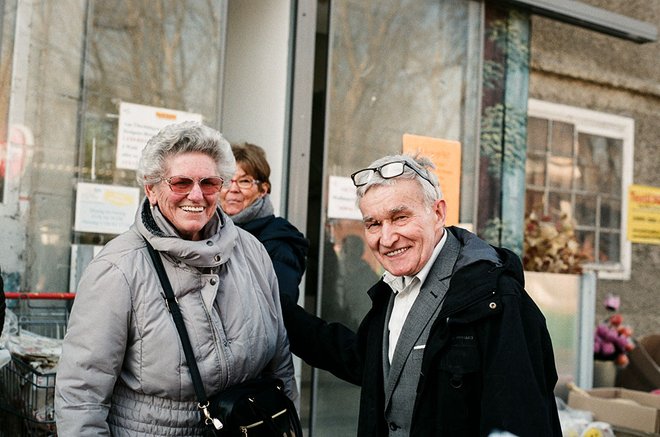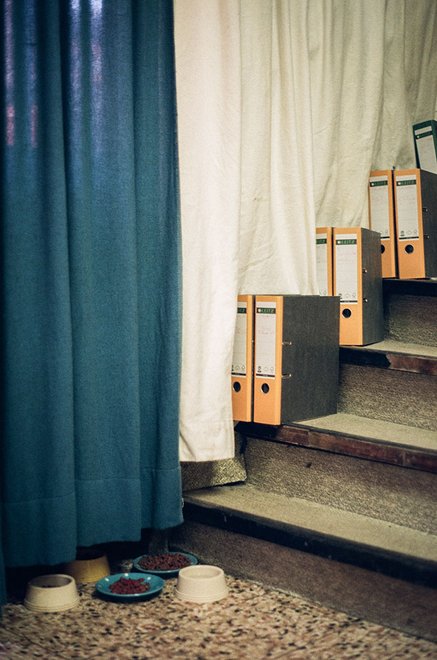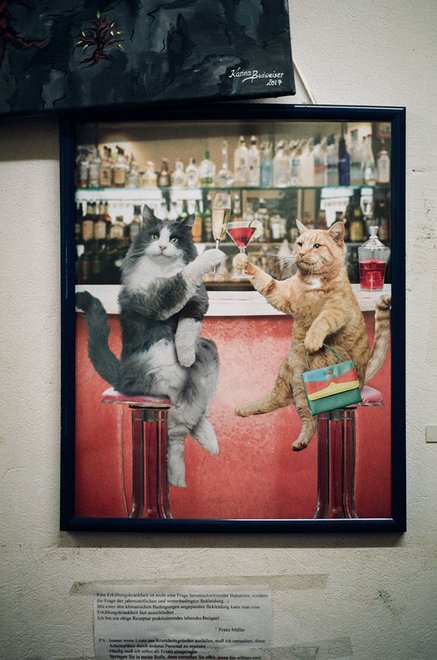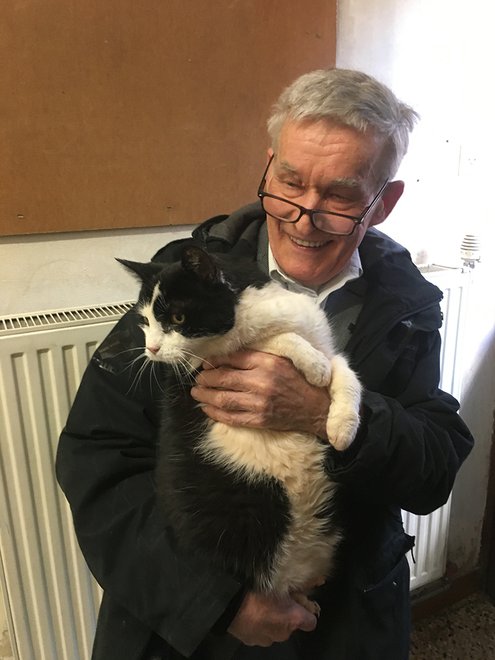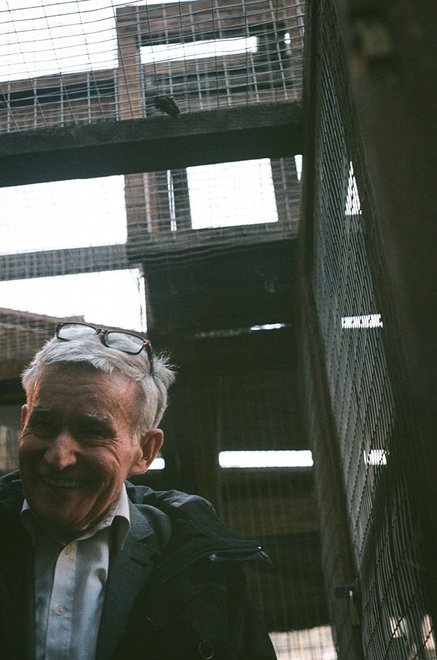more is more
Kritzendorf, a little town 30 minutes up the Danube from Vienna, is where Austria’s emperor of fabric rules his dominion. Franz Müller’s legendary textile store is a Viennese cultural institution; a mecca for fashion designers, art students, and do-it-yourself enthusiasts. Decluttering guru Marie Kondō is not welcome here. Bursting at the seems with fabrics, clothing, decorative materials and sewing utensils, it is a place full of contrasts—chaotic order and orderly chaos, beauty and cheap knickknacks, old and new, nostalgia and curiosity, arbitrariness and precision, dirt and cleanliness. We spoke to the legendary 77-year-old founder and his Bosnian-born designated successor, Adnan “Adi” Beslagic. Hanging on the door to their office is a sign reading “There’s nothing to complain about here.” True indeed.
“Searching and finding is a beautiful experience”
There’s an astronaut outside the entrance! What’s he doing there?
Franz Müller: I just liked him, so I bought him. But I should actually get rid of him at some point ...
Adnan Beslagic: He just kind of happened, the way everything here just kind of happens. Even if the customers have a hard time believing it, we always have an overview of things. That doesn’t mean that everything is planned, of course. We love to buy all kinds of stuff at liquidations and flea markets.
“50 million running meters from all over the world.”
Just how much “stuff” are we looking at here?
Adi: What you see here is just the tip of the iceberg. We like to call our little shop “the showroom.” We have three big warehouses here in Kritzendorf and there is another 4,700 square meter warehouse in Schwechat. All in all we have around 5.000 tons, 50 million running meters from all over the world. We add roughly 50.000 running meters every week. I buy from the most renowned clothing manufacturers in Europe; leather from Versace and Salvatore Ferragamo, surplus from Max Mara and so on. Twice a year we get the surplus from the current collections. In other words, we have the fabrics at a time when the finished goods aren’t even on the market yet. Another delivery arrived just today: two trucks filled with fabrics from Italy, including the finest leather.
How do you manage such incredible amounts of fabric?
Franz: It’s a chaotic order—or rather an orderly chaos. I’m like a photographer without a camera, I remember everything. I spend every day in the warehouse, helping to load and unload the goods. You can ask me about any fabric you can think of, and I can tell you immediately in which warehouse or on what shelf it can be found. We like our system and refuse to make everything supposedly beautiful and new. Our long-serving employees are our computers—and they’re very ambitious.
Adi: People were afraid that I would redo everything after the handover. But that’s ridiculous. We’re nostalgic, we’re proud of our growth and of our system. Everything here has history.
“It’s a chaotic order. I’m like a photographer without a camera, I remember everything.”
There’s no computer system for the stock?
Adi: We have a cash register, but that’s about it. No computer system, few e-mails, and a lot of human contact.
Who buys from you?
Adi: Young and old alike, designers from all over the world. We have a regular customer from Paris, for instance, and even some from Osaka. We’re different, and they know that. Our French customer is always telling us that there is nothing old left in Paris anymore, everything gets destroyed or renovated. Being with us reminds her of the old days, and that inspires her. A lot of theaters buy from us, even some in New York, as well as many European film productions.
Franz, you’re affectionately known as “Rag Man Müller,” how did you wind up in that role?
Franz: The coincidences of life! I just slipped into it. In 1962, I graduated from the agricultural secondary school in Wieselburg, where I grew up. But I never ended up working in the agricultural sector. I got a job manufacturing bags, where I worked with textiles, synthetic leather, and PVC film. Plastic bags didn’t exist back then, after all. I made a lot of good connections for surplus fabric. One day I stopped just passing the fabric on to acquaintances and turned it into a business.
What happened next?
Franz: I got the surplus from textile factories at five shillings per kilo and then sold them for eight times the price. I went into business for myself with just 4,000 shillings, because self-employment is the only way to really feel fulfilled. That’s how I see it. With a lot of hard work, heart and soul—I still work a hundred hours a week.
You must really love fabric ...
Franz: If I had done something else, I would have been just as ambitious. If you were my bosses, I’d prove to you that I’m worth my money!
Adi: That’s not entirely true, when Franz really likes a fabric, he kisses it! Then it can take a while until he agrees to put it up for sale.
“I got my strong legs at the farm. Maybe that explains my stamina.”
Is there a recipe for your success?
Franz: Courage and instinct. I’m not a trained businessman, my education was a childhood on a farm. I learned plain dealing and ambition there. You have to behave honestly—towards the suppliers, the customers, and your fellow human beings. And I got my strong legs there too. It was a five kilometer walk to school. Maybe that explains my stamina.
What does beauty mean to you? What makes a fabric beautiful?
Franz: That’s too fast for me. I’ll have to think about it. It’s a judgment we leave to our customers, I guess. Otherwise we would be intruding on their thoughts.
But you must have a personal concept of beauty.
Franz: A fabric by itself isn’t beautiful, it only becomes beautiful through creative ideas. It needs certain ingredients—a model, a designer. Creativity! The beauty of inspiration! We don’t want to impose our opinion on anyone, we don’t even like to make recommendations. Searching and finding is a beautiful experience. We point out the possibilities and let others decide how to transform a body through textiles.
“It’s beautiful to be able to serve people.”
Adi: Beauty can be anything, not just something visual. We find our customers’ satisfaction especially beautiful.
Franz: It’s beautiful to be able to serve people.
We take a tour through the main building and the three warehouses—though they are less than five minutes walking distance from each other, Adi personally takes us in his car. Many of the customers know the two by name. “How are you, Franz?” asks an elderly lady. “Just as fine as a young man ought to be!”
Is serving others better than being served?
Franz: Of course! I never took anything out of the company. I always say, “The last shirt I’ll wear won’t have any pockets.” Sure, I would have enjoyed having a sports car when I was young, but I always kept my money in the business. I’ve been running my company for years now without a bank, just using my own assets. Independence is key!
“The last shirt I’ll wear won’t have any pockets.”
How would you like to serve people?
Adi: We love to help creative people develop and reach their potential. For many of them it’s a budget issue. Sewing, knitting and handicrafts have to be and stay affordable, and we’re making sure of that.
Franz: It’s about making the product accessible in best and most affordable way, rather than getting the most possible money out of the customer. Respect is our guiding principle, not cashing in on our customers. We see to it that others can accomplish their goals. That’s a beautiful responsibility, but also a moral one.
How has the fabric trade changed over the course the years?
Adi: In the past you would sew in order to save money. That’s different nowadays. You can buy T-shirts for three or four euros. The retail market for fabric has made the mistake of trying to make up for the dwindling numbers of customers with higher prices. We sell cloth starting at 30 cents a meter.
And how much does the most expensive material cost?
Adi: 16 euros for one meter of woolen loden cloth. It’s produced especially for us and is available in three different levels of quality and 25 colors.
Are you religious?
Franz: I was baptized as a Catholic, but I live in respectful coexistence with all other religions. I’m grateful to God for giving me my strength. The Archbishop of Vienna, Christoph Schönborn, even visited us once!
Tell me more!
Franz: That was about 15 years ago, he thanked me for my charity work. Over the course of 20 years I regularly invited more than 30 Belarusian children to stay with me for three weeks. I covered all the travel expenses.
What else do your donations go toward?
Franz: For the care and castration of animals in several shelters both here and abroad.
When Franz isn’t busy buzzing around in the warehouse or salesrooms he looks after his cats. His personal record is 35 adoptive cats at one time. In the inner courtyard of the building complex he has built a little kingdom for his beloved pets, “Müller Franzl’s Cat House.” Its residents are three-legged, blind, rescued from a tree. If they could speak, they’d probably call him daddy. Whenever he needs a break from people he goes to see his cats, Franz admits. He disappears suddenly, returning a few minutes later proudly holding a well-fed black-and-white cat: “This is Pandaburli!”
Speaking of cat-content—how do you advertise your business in the age of social media?
Franz: We don’t need advertising. Treating people honestly is our advertising.
After conversing for more than two hours, we finally say our goodbyes. As a thank-you for our time we are presented with two gigantic boxes of chocolates to take home with us from this oasis of friendliness.

